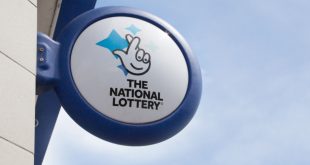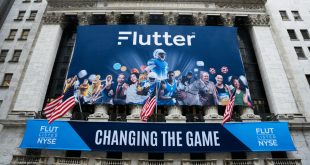 Scott Longley, Editorial Director of Regulus Partners, examines the upheaval in the fantasy sports industry caused by last week’s arrival of Disney.
Scott Longley, Editorial Director of Regulus Partners, examines the upheaval in the fantasy sports industry caused by last week’s arrival of Disney.
News reports that the Walt Disney Company was planning a $250m investment in DraftKings set the seal on the rumours that had been running around the world of fantasy sports that the owner of the ESPN sports network was about to put its own stamp on the nascent market.
According to the story in the Wall Street Journal – to date the only source of information on the yet-to-be-announced deal – the investment will value DraftKings at just under $1bn. This dramatically raises the stakes for the DFS market overall. The last time DraftKings went to investors was in August last year when it raised $41m in a series D funding round. This was trumped the following month by DFS market leader FanDuel which tapped its investors for a further $70m in a series C funding round.
The size of the Disney investment – if it comes to pass – changes the perception of the worth of the DFS market as far as investors are concerned but it isn’t just the valuation that was noteworthy. According to the news report the deal also commits the number two in the daily fantasy sports market to a whopping $500m in ad spend on ESPN alone over the next three and a bit years.
To put this spending commitment into perspective this is greater than the marketing and advertising expenditure of the entire of the DFS market in 2014, which Adam Krejcik, analyst at Eilers Research, estimates to have been around $70m.
For all the excitement generated by the news of the proposed Disney investment and the concomitant marketing campaign, DFS is still a relatively small market in revenue and for now an effective duopoly. According to Eilers Research, FanDuel achieved revenues in 2014 of $57m while DraftKings notched up $30m and the remaining market participants struggled to make $3m between them.
No wonder, then, that some sceptics have questioned the $500m ad spend figure. One industry insider went as far as to suggest that if true, such a spending commitment makes it almost inevitable that DraftKings will be seeking another round of funding sooner rather than later.
But the headline figure does raise issues for any potential new entrants, including Amaya and the other name often tipped as waiting in the wings, Yahoo. “The advertising deal that DraftKings is reportedly going to do with ESPN essentially sets the bar in terms of how much money you will need to spend to effectively compete against the big guys in the US in 2015/16,” says Krejcik.
He points out that PokerStars spend on customer acquisition globally in 2013, the last full year before the Amaya buyout, was $180m. “We think Amaya/PokerStars would likely need to spend at least US$100m in year one to be competitive, which would be extremely dilutive to its earnings,” he says. “They certainly have the cash flow, balance sheet, and infrastructure to go head-to-head with DraftKings and FanDuel, but it comes down to whether management is willing to sacrifice margins in order to gain access to this new market. We expect Amaya to take a far more measured and conservative approach to DFS.”
The illusion of correlation
In a conference call with investors at the announcement of Amaya’s 2014 results, chief executive David Baazov specifically made mention of the 86 million total registered PokerStars players, suggesting they were a ready market for a DFS offering. “A lot of the US players that were formerly PokerStars players would like to see us launch fantasy sports,” he added.
But the claim of a large poker/DFS crossover potential is disputed by those on the inside of existing DFS operators. One source suggested there was the “optical illusion of correlation” between DFS and poker, suggesting that at most 5% of the current DFS player pool had played online poker at any point online. “The people who play fantasy are sports fans,” says one DFS insider. “They want to watch sport once they have entered the competition. They will watch six hours of sport, typically. The mentality is different.”
What is undoubtedly true is that PokerStars has the capability to build a competitive DFS platform. But with Baazov claiming last week that his company would be up-and-running with its own DFS offering before the start of the next NFL regular season, it would suggest the company will have to pursue the second of the “parallel tracks” mentioned on the call, that of “strategic acquisition”.
Says Krejcik: “Amaya is very savvy when it comes to M&A. I’m not sure if it knew all of the details regarding ESPN/DraftKings, but it made it known that it was looking at acquisition targets in this sector, so interpret that as you will.”
DraftKings and FanDuel control near enough 90% of the DFS market between them. In this sense it resembles the car-sharing market where Uber and Lyft are vying for supremacy. But still in DFS there are at least 20 more companies in the minor leagues which Amaya might look at in order to enter the market. While the price of competing will still be steep, the price of entry might not be all that expensive if all that was needed was a platform from which Amaya could build on.
Amaya aside, the next big news from the DFS sector is likely to come from FanDuel which is rumoured to be close to securing its next round of financing, this time with PE outfit KKR, and is expected to value the firm at around $1.5bn. “That will provide it with a war-chest to go head-to-head with DraftKings,” says Krejcik.
For those that follow the world of VC investing in largely US-based tech companies, this is unicorn territory – companies that are worth over $1bn pre-IPO. Appropriate, perhaps, because fantasy sports is very much a form of protected species in the US, exempt from UIGEA, for instance, and specifically legal in all but a handful of states. But while the pastime itself might not be classed as gambling, those that are fronting up the money to capture market share are very much punters of the high-roller variety.









